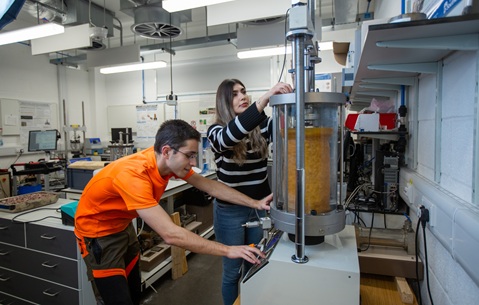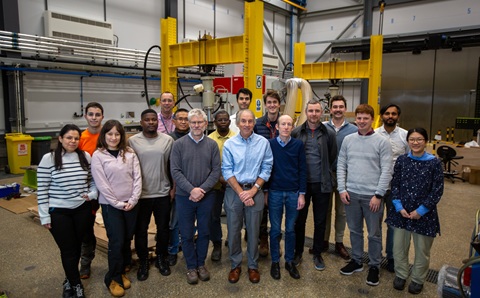Engineers at the University of Southampton have been honoured with a Queen Elizabeth Prize for Higher and Further Education for their pioneering work to strengthen the UK’s rail network and prepare it for the impacts of climate change. Their research has already saved billions of pounds in public spending and improved the resilience of ageing rail infrastructure.
The work is led by Professor William Powrie, Professor of Geotechnical Engineering and Fellow of the Royal Academy of Engineering. He said:
“It’s quite amazing to get this recognition for the work we’ve done over many years. It’s a real testament to everyone who has been involved, and to rail research and engineering in Southampton. We are passionate about applying fundamental science to solve real world problems, and it’s fantastic to have this celebrated.”
Professor Mark E. Smith, President and Vice-Chancellor of the University of Southampton, said:
“We are immensely proud of the strength of our rail engineering research here in Southampton. It has been world-leading work for a sustained period making pioneering breakthroughs over many years, and it continues to have a huge impact on the rail network as well as the economy.
“We are honoured that this research has deservedly been awarded a Queen Elizabeth Prize for Education.”
Two decades of research have delivered significant cost savings and informed major national decisions. In 2017, high costs led the Government to pause its railway electrification programme. Southampton researchers subsequently developed new engineering standards that reduced the need for bridge reconstruction and cut the required depth of foundations for overhead line support masts. These changes enabled the programme to restart and saved the UK economy several billion pounds.



The team has also advanced understanding of sustainable railway embankment management. Embankments, typically made of clay, shrink in summer and swell in winter. Southampton’s work shows how managing vegetation around track can minimise this movement without undermining slope stability.
Professor Powrie said:
“Railway infrastructure engineering has been traditionally based on experience and observation. We have worked to underpin this experiential and empirical evidence with scientific understanding. That enables us to look at how engineering practice needs to change in the light of changing usage, climate, materials, and construction and maintenance processes, and to avoid unnecessarily over-engineering.”
Much of the research is conducted at the UKCRIC National Infrastructure Laboratory in Southampton. The facility houses equipment capable of testing materials under extreme loads, analysing soil behaviour, and assessing full-scale components such as track systems and bridge decks. A 130 g-tonne geotechnical centrifuge allows 25 years of weather impacts to be simulated in around 24 hours.
Southampton is also at the forefront of innovations in track monitoring. Working with the Optoelectronics Research Centre, researchers are developing the use of optical fibres placed in the track bed to analyse how infrastructure behaves under passing trains. Professor Powrie explained:
“Working with colleagues in the Optoelectronics Research Centre, we have been able to carry out meaningful monitoring and analysis of signals from optical fibres in the track bed to give us a better understanding of what happens when trains pass over. It will enable us to design improvements, enhancements and remediations in a more targeted way and with more confidence.
The ultimate goal is to use optical fibres that are already next to railway tracks, for example for communications purposes, to also understand track behaviour and condition.”
Sir Damon Buffini, Chair of the Royal Anniversary Trust, said:
“The Queen Elizabeth Prizes for Higher and Further Education celebrate the power of education to change the world for the better. This much-loved national honour recognises, at the highest level of state, outstanding work in UK universities and colleges, and the remarkable benefit they bring to our economy, society and the wider world.”
The University’s research continues to shape national approaches to electrification, embankment resilience and smart sensing technologies, contributing to a more reliable, sustainable and climate-resilient rail network.





